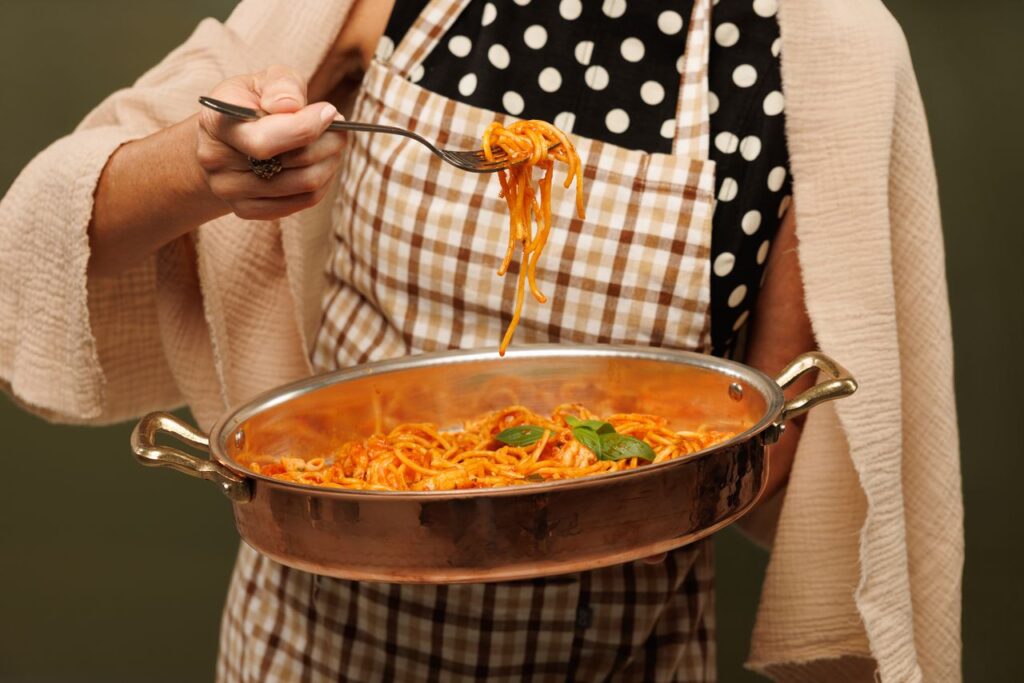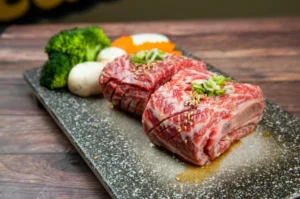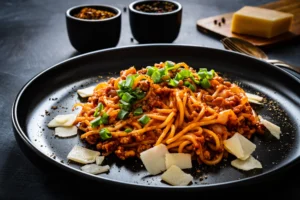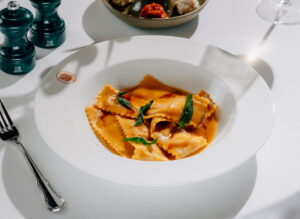At MamaBella —where Sardinian heritage meets contemporary elegance in Dubai—olive oil is more than a pantry staple; it is the quiet hero that frames texture, lifts aroma, and carries the sunlit spirit of the Mediterranean onto every plate. As our team shapes the concept for a premium Italian restaurant in Kempinski, The Boulevard (pre-launch), we obsess over Extra Virgin Olive Oil (EVOO) because it touches almost everything we plan to serve: handcrafted pasta, wood-fired pizza, and vibrant antipasti rooted in Sardinian tradition. This guide explains how to select, store, and use EVOO at home, while offering a window into how MamaBella thinks about flavor, authenticity, and family-style dining in Dubai’s evolving culinary scene.
Key Takeaways
- EVOO is prized in Sardinian cuisine for its freshness, low free acidity, and layered flavor—fruitiness, pepper, and balanced bitterness—that elevate both rustic and refined dishes.
- Choose oils with clear origin, recent harvest, and well-described tasting notes. Reserve your most expressive bottles for finishing; use versatile, medium-intensity oils for everyday cooking.
- Proper storage—cool, dark, and tightly sealed—protects quality, so your dressings, pasta, and pizzas taste bright and authentic.
What Makes Extra Virgin Olive Oil (EVOO) Special in Sardinian and Italian Cooking?
Extra Virgin Olive Oil is mechanically extracted juice from olives, handled with care to preserve natural antioxidants and aromas. In Sardinia, cooks rely on it the way a tailor trusts a perfect thread: EVOO binds ingredients, lifts herbs, and adds a glossy finish that feels both rustic and luxurious. For MamaBella’s vision as an Italian restaurant in Dubai, EVOO is the lens through which we present regional identity—clean flavors, seasonal produce, and an emphasis on family sharing.
Quality and Standards—In Plain Language
“Extra virgin” means an oil has passed chemical and sensory criteria that signal freshness and purity. While labels can feel technical, you can trust your senses: a quality EVOO smells alive (think green apple, fresh-cut grass, tomato leaf) and tastes vibrant, with a little bitterness and a peppery tickle in the throat. That natural bite indicates healthy polyphenols. If an oil smells flat, waxy, or stale, it won’t do your dishes any favors.
How to Select the Right EVOO
Picking EVOO isn’t about chasing the fanciest bottle—it’s about matching intensity and character to how you cook. Here’s a simple framework we use when designing dishes for our pre-launch menu planning in Dubai.
Read the Label Like a Chef
- Harvest date: Fresher is better. Choose bottles with a recent harvest and aim to enjoy within 12–18 months of harvest for peak flavor.
- Origin and cultivars: Regions and olive varieties shape flavor. Tuscan-style oils often run bold and peppery; Ligurian-style oils skew softer and floral. Sardinian oils can offer a balanced, herbaceous punch that’s fantastic for seafood and vegetables.
- Certifications: Designations such as PDO/PGI can signal authenticity and traceability, though many excellent small producers may not carry them.
- Packaging: Dark glass or tins protect oil from light. Clear bottles look pretty on a shelf but don’t protect well.
Match the Oil to the Task
Keep at least two EVOOs: a versatile “everyday” bottle for sautéing and roasting, and a more expressive finishing oil. The everyday oil should be medium-intensity, friendly, and adaptable. The finishing oil can be bolder—drizzle it where you want guests to notice a fragrant lift, like over fish, burrata, or grilled vegetables.
Curious how this plays out at MamaBella? Picture roasted carrots tossed in a medium-intensity Sardinian-style oil to caramelize in the oven, then finished tableside with a brighter, pepper-forward drizzle for contrast. That layering is where EVOO sings.
Health and Nutrition: Why EVOO Deserves a Spot on Your Table
EVOO is a cornerstone of Mediterranean eating patterns for good reason. It’s rich in monounsaturated fat and naturally occurring antioxidants (like polyphenols and vitamin E). In practical terms, that means flavorful cooking with a focus on balance. Use EVOO for salad dressings, marinades, and gentle stove work; then finish warm dishes off the heat to protect delicate aromas. The result is delicious food that feels light, clean, and satisfying.
Quick Ways to Make Meals Healthier—Without Sacrificing Flavor
- Swap heavy sauces for a bright EVOO-based vinaigrette with lemon, salt, and a pinch of crushed chili.
- Roast vegetables with EVOO to encourage browning, then finish with another light drizzle and flaky salt for aroma and texture.
- Stir a spoonful of EVOO into soups just before serving to add gloss and a fragrant top note.
Sardinian Dishes Where EVOO Shines
Sardinian cooking is grounded in simple ingredients prepared with precision. Two favorites reveal how EVOO shapes flavor and texture:
- Fregula: Toasted semolina pearls simmered in stock until plump. Start with a gentle sauté of onion and seasonal vegetables in EVOO, then fold through the fregula and finish with fresh herbs and a fragrant drizzle.
- Pane Carasau: Paper-thin crispbread that turns theatrical with a brush of EVOO. Warm it lightly, crown with tomatoes, basil, and a snap of sea salt, and you have a snack that tastes like coastal sunlight.
These traditions anchor our culinary storytelling at MamaBella, blending family recipes, communal platters, and a distinctly Mediterranean sensibility into our pre-launch concept in Dubai.
EVOO and Handcrafted Pasta: Technique Meets Taste
At the heart of MamaBella’s kitchen vision is pasta made by hand every day. EVOO supports pasta at every step. In sauces, it acts as an emulsifier, helping tomato, garlic, and basil become a silky cloak rather than a watery jumble. In aglio e olio, the oil is the sauce—slowly warmed with garlic to bloom aroma without burning, then lifted with parsley and a splash of pasta water for sheen.
Practical Pasta Tips
- Tomato sauces: Sweat aromatics in EVOO over gentle heat, add tomatoes, and finish with a fresh drizzle to restore brightness.
- Herb sauces: Blend parsley, basil, EVOO, and a touch of lemon zest; fold through warm pasta so the fragrance stays vivid.
- Seafood pastas: Use a medium-intensity EVOO so the fish remains center stage; finish with a peppery drizzle for contrast.
If you love pasta as much as we do, keep exploring shaping, sauces, and regional traditions—our team shares stories and techniques on the MamaBella blog, and you’ll soon see why we’re passionate about handcrafted pasta in Dubai.
EVOO and Wood-Fired Pizza: From Dough to Final Drizzle
Great pizza is a study in balance: blistered crust, lively tomato, creamy cheese, and just enough EVOO to tie it all together. A small amount of oil in the dough can influence tenderness; a thin brush on the rim encourages color and keeps sauce from soaking in. After the bake, a final thread of EVOO carries aroma straight to the nose and softens the edges of concentrated heat and smoke from the wood fire.
When tasting at home, try this sequence: smell your EVOO, warm a few drops between your fingers, then drizzle on a slice and notice how basil, tomato, and charred dough suddenly feel more “in focus.” If you’re scouting for inspiration, explore our approach to wood-fired pizza in Dubai—the interplay of ingredients is designed to showcase oil as both seasoning and signature.
Types of Olive Oil—And When to Use Them
All olive oils are not interchangeable. Here’s a quick map to guide everyday decisions:
- Extra Virgin Olive Oil: First choice for dressings, finishing, and any dish where you want aroma and character to shine.
- Virgin Olive Oil: A step below extra virgin in strict sensory standards, still suitable for gentle cooking.
- Refined or “Pure” Olive Oil: Neutral profile, useful where you want less flavor interference or higher heat tolerance.
- “Light” Olive Oil: “Light” refers to flavor and color, not calories. Generally more neutral; fine for frying but not ideal for finishing.
- Pomace Oil: Industrially refined from olive solids after pressing; typically reserved for large-scale cooking, not for showcasing flavor.
For home cooks, the simplest approach is to keep one great EVOO for finishing and one friendly, mid-intensity EVOO for daily sautéing and roasting.
Storage: Protecting Your Investment
Light, heat, and oxygen are EVOO’s enemies. Store bottles in a cool, dark cupboard, not next to the stove. Choose dark glass or tins, close the cap firmly, and buy sizes you’ll finish within a couple of months once opened. If a bottle sits out on the counter under bright light, it will lose its sparkle faster than you think, and that can dull the flavors of dressings, bruschetta, and delicate seafood.
Why EVOO Fits the Spirit of MamaBella
In Sardinia, harvesting olives and gathering at the table are community rituals. That sense of togetherness is central to MamaBella’s approach: large platters, shared bowls, and the humble elegance of oil that brings everything into harmony. Our setting within Kempinski, The Boulevard aims to balance rustic textures with modern comfort—earthy, sun-lit, and quietly luxurious—so the food’s simplicity feels celebratory, not plain. EVOO is our bridge between tradition and refinement.
Planning a Visit
As MamaBella finalizes its pre-launch preparations, we invite you to follow our journey and discover the flavors we’re crafting for Dubai. For updates and early access to experiences, keep an eye on our Sardinian cuisine in Dubai updates, browse the latest posts on the blog, and—when reservations open—secure your table through our reservation page. Until then, let EVOO guide your home cooking: choose thoughtfully, store carefully, and finish generously.
Frequently Asked Questions
1) What is the role of olive oil in Italian cuisine?
It’s foundational. EVOO seasons dressings, supports sautéing, enriches sauces, and delivers a final aromatic lift to finished dishes. In our approach to Sardinian cuisine, EVOO is the connective tissue that makes bright ingredients feel complete.
2) How do I select the best EVOO for Italian dishes?
Look for a recent harvest, clear origin, and tasting notes that match how you cook. Keep a versatile medium-intensity oil for daily use, and a bolder bottle for finishing pasta, seafood, and vegetables.
3) Can I bake with EVOO?
Yes. EVOO adds moisture and a subtle fruitiness to cakes and cookies. Choose a gentle, buttery oil to avoid overpowering delicate bakes.
4) Is EVOO suitable for cooking with heat?
Absolutely—especially at low to medium heat. For high-heat searing, use moderation and watch the pan; finish off the heat with a fresh drizzle to restore aroma.
5) What’s the easiest way to bring EVOO into daily cooking?
Master a simple vinaigrette, roast vegetables with EVOO, and finish warm dishes just before serving. These three habits will transform your weeknight meals.






